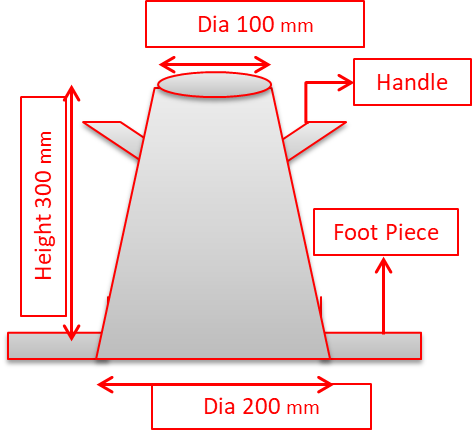Slump Test of Freshly Hydraulic Mix Concrete (ASTM C-143)
Slump Test of Freshly Hydraulic Mix Concrete
(ASTM C-143)
Introduction
The slump test is to determine the consistency of concrete, water content increase or decrease the cause of slump increase or decrease
Many other factors can change slump without changing in water content in concrete
Such as aggregate properties, grading, mix proportion, air content, concrete temperature, or add mixture
Apparatus
Frustum Cone
Temping Rod, Diameter 16 + 2 mm, Height 400 to 600 mm
Measuring Device
Procedure
Dampen the cone and base plate and place it flat and free of vibration surface
Clamp the cone with a base plate or technician standing of two-foot pieces
Fill the slump cone in three layers of even concrete distribution:
Fill the first layer from the bottom to 70 mm, Roding 25 times through its depth
Fill the second layer from the first layer to 160 mm, Roding 25 times through the previous layer approximately 25 mm
Fill the third layer from the second layer to the top of the cone, Roding 25 times through the previous layer approximately 25 mm
Excess concrete remove from the top of the cone by rolling motion of the temping rod
Raising the cone from the concrete carefully in a vertical direction within 5 + 2 seconds
Measure the slump from the top of the cone to the center top of the concrete
Report slump in inches or millimeters nearest 1/4 in. 5 mm





Comments
Post a Comment